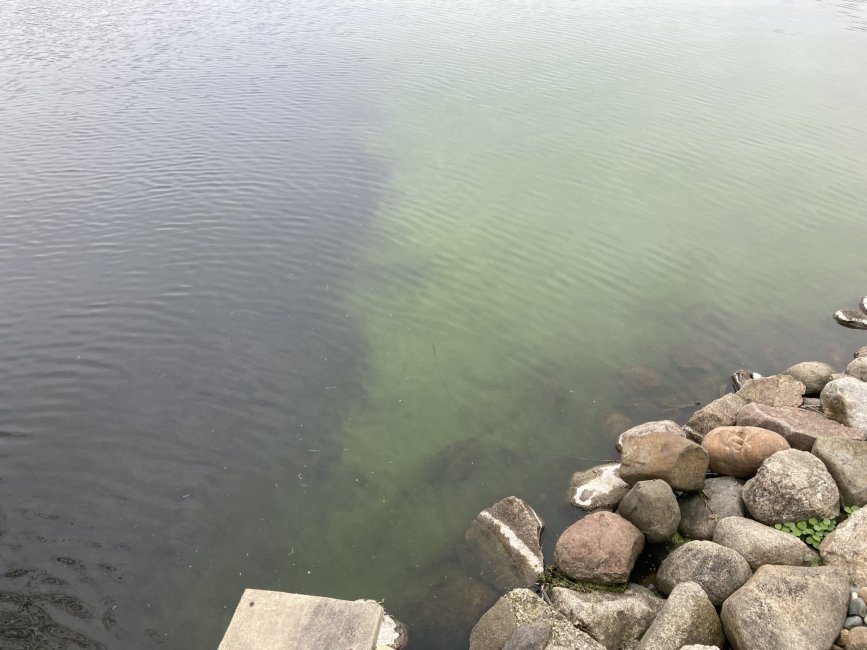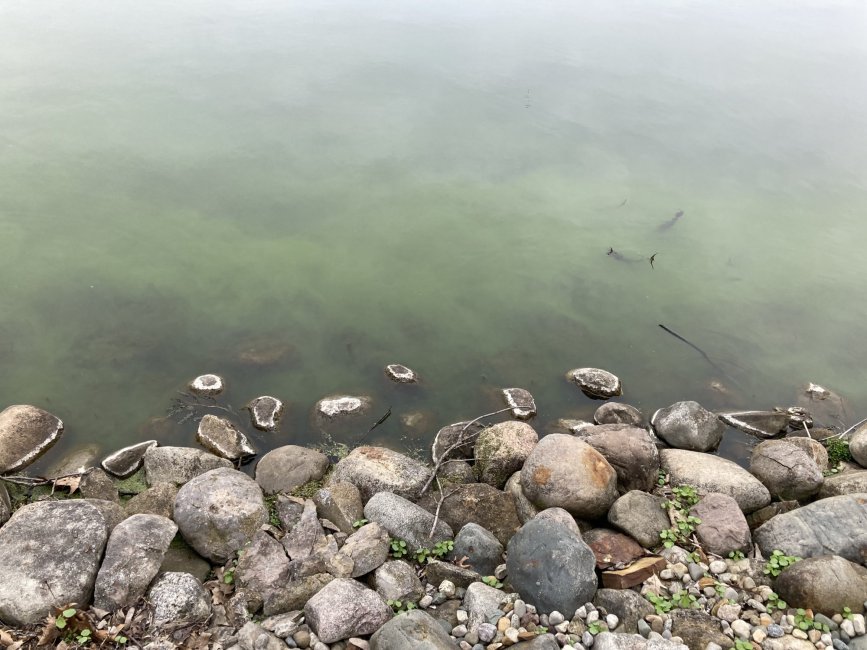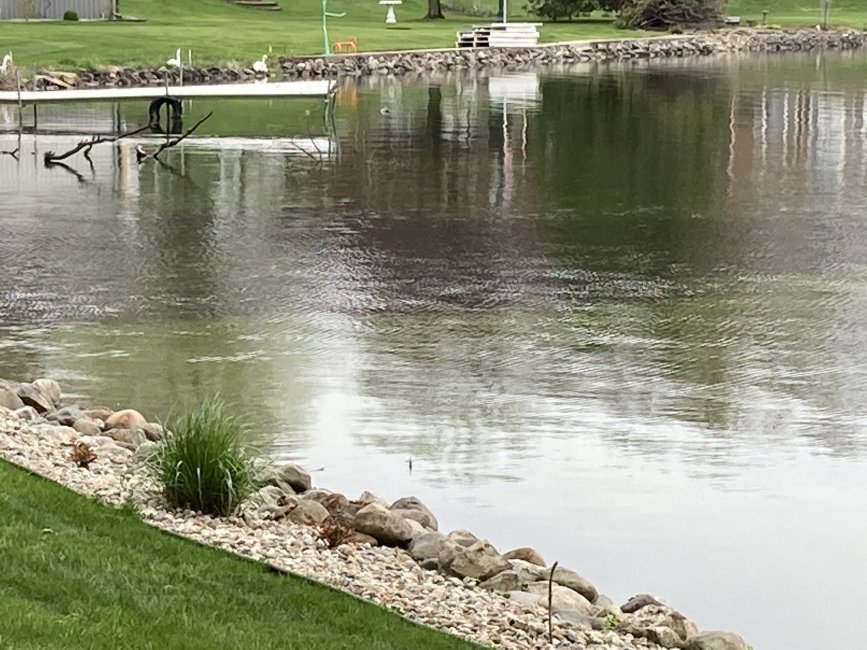About 3 weeks ago saw a small algae bloom along sides of channel. Few days ago saw a small bloom along shoreline of bay/lake. Today mowing yards saw this.

Standing on end of vinyl sea wall along channel - channel/flowing water on left. Bay/lake water - glacial rock shoreline - on right.

Can see the stream of fresh water looking back. Severe areas of algae are so thick don’t think a fish could see 6”


Standing on end of vinyl sea wall along channel - channel/flowing water on left. Bay/lake water - glacial rock shoreline - on right.

Can see the stream of fresh water looking back. Severe areas of algae are so thick don’t think a fish could see 6”





